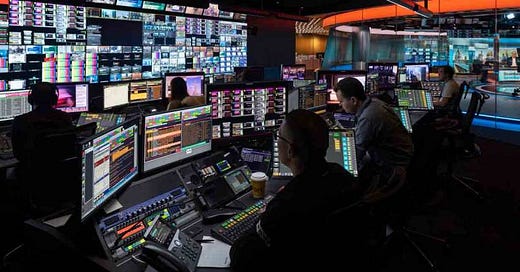The Unseen Script: How Major Media Channels Shape Societal Narratives
Imagine flipping through major news channels – CNN, Fox News, CNBC, ABC, MSNBC, NBC – only to realize a startling similarity in the stories they cover and how they present them. Is it coincidence or a calculated move? Some critics argue that it's the latter (McChesney, 2008). This conformity in narrative becomes even more apparent in the coverage of police violence, a topic that not only holds racial and political implications, but also has a profound impact on society's perception of law enforcement.
The Echo Chamber of Modern Media
The evolution of the media landscape, driven by the internet's advent and 24-hour news channels, has resulted in a hyper-centralized media industry (Picard, 2002). Ideally, media companies should function as the "Fourth Estate," providing checks and balances on governmental power. However, critics argue that today's media has deviated from this role, offering a uniform narrative rather than diverse viewpoints (McChesney, 2008).
A staggering 80% of stories covered by different outlets mirror similar viewpoints (Pew Research Center, 2012). The public is thus exposed to nearly identical narratives, angles, and even phrasings on major news topics, irrespective of their chosen channel or publication. This conformity largely stems from high levels of media consolidation, wherein a decreasing number of corporations own an increasing majority of media outlets (Picard, 2002).
Spotlight on Police Violence
Police violence is a poignant example of this media phenomenon. Despite the U.S. witnessing numerous such incidents, only select cases make the headlines (Edwards, Lee, & Esposito, 2019). These are typically stories that align with the media's wider narrative or those potent enough to evoke strong emotional responses from the public (Rossler, Krug, & Theiss, 2018).
Research indicates that news coverage of police violence leans towards stories featuring racial conflict and political drama (Rossler, Krug, & Theiss, 2018). As these narratives often escalate viewership ratings, foster social media engagement, and provoke controversy, they become more enticing for media outlets (Scheufele, 2000).
Social Media: The New Newsmaker
Modern media conglomerates are significantly swayed by the rising influence of social media. Stories that stir the pot on platforms like Twitter or Facebook are more likely to be amplified by mainstream outlets (Vosoughi, Roy, & Aral, 2018). Consequently, media narratives can be disproportionately influenced by these platforms' dynamics, which prioritize engagement-enticing content over balanced coverage (Tandoc Jr., Lim, & Ling, 2018).
Final Thoughts
The media's formidable role in sculpting societal narratives cannot be overlooked. The apparent echo chamber effect in media coverage, especially regarding sensitive issues such as police violence, calls for further investigation and conversation. Can the media truly fulfill its purpose of objective and comprehensive public information without a diverse narrative? We must strive for transparency and an active commitment to diversifying narratives to sustain a robust media ecosystem. After all, a society well-informed is a society well-equipped to enact change.




